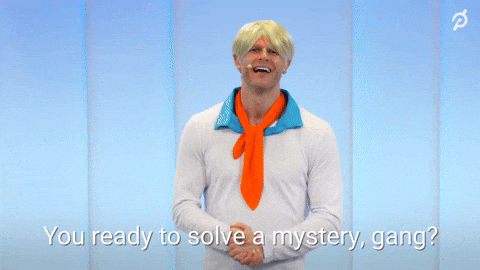- Christopher Frazier's Newsletter
- Posts
- Unlock Your Creative Genius: Problem-Solving Techniques for Busy Professionals
Unlock Your Creative Genius: Problem-Solving Techniques for Busy Professionals
Break Through Roadblocks and Unlock Innovative Solutions with These Proven Techniques
Hello Peeps,
Do you ever feel like you’re stuck in a rut, facing the same challenges day after day? Whether it's finding fresh solutions at work or overcoming personal hurdles, the key to breaking through is often not about working harder but thinking differently.
Today, I want to share some powerful creative problem-solving techniques that can help you tackle any challenge with confidence and innovation.
1. The “Why?” Method
Start by asking yourself "Why?" five times to get to the root of the problem. This technique, popularized by Toyota, helps you dig deeper into the issue, allowing you to uncover the core reason behind it. Once you understand the root cause, you can develop more targeted and effective solutions.
Example:
Problem: "My team isn’t meeting deadlines."
Why? "Because they are overwhelmed with tasks."
Why? "Because we have too many projects running simultaneously."
Why? "Because we haven’t prioritized them effectively."
Why? "Because we lack a clear project management strategy."
Why? "Because we haven’t invested in proper planning tools."
Solution: Implement a robust project management system to prioritize tasks.
2. Mind Mapping
Mind mapping is a visual way to explore ideas and solutions. Start with your central problem in the middle of the page, then branch out with ideas, potential solutions, and related challenges. This technique allows your brain to make connections it might not see in a linear list, sparking creativity.
How to Use It:
Write down your main challenge in the center of a blank page.
Draw branches that represent different aspects of the problem.
Add sub-branches for potential solutions or related ideas.
Look for connections or patterns that emerge.
3. The SCAMPER Technique
SCAMPER is an acronym for Substitute, Combine, Adapt, Modify, Put to another use, Eliminate, and Reverse. By applying these prompts to your problem, you can generate new ideas and solutions.
Application Example:
Substitute: What can you replace in the current process?
Combine: Can you merge two existing strategies?
Adapt: How can you adjust the approach to fit new circumstances?
Modify: Can you change the process to make it more efficient?
Put to another use: Is there a different way to use existing resources?
Eliminate: What can you remove to simplify the process?
Reverse: What happens if you reverse the sequence of steps?
4. Brainwriting
If you’re working in a team, Brainwriting is a fantastic technique to foster creativity without the pressure of speaking up in a group. Each team member writes down ideas or solutions to a problem on a piece of paper. After a set time, the paper is passed to the next person, who adds their ideas or builds on the existing ones.
Steps:
Set a timer for 5-10 minutes.
Each team member writes down as many ideas as possible.
Rotate the papers, and continue adding or refining ideas.
Review and discuss the collective results.
5. Role Storming
This is brainstorming with a twist. Instead of generating ideas as yourself, you step into the shoes of someone else—this could be a colleague, a famous figure, or even a fictional character. By thinking from another perspective, you might come up with innovative solutions you wouldn’t have considered otherwise.
How to Try It:
Choose a person or character whose approach might differ from yours.
Ask yourself, “What would [Name] do in this situation?”
Generate ideas based on this new perspective.
Compare these ideas to your usual thinking patterns.
Wrapping Up
Creative problem-solving isn’t just about coming up with wild ideas—it’s about finding new ways to approach challenges that lead to practical, effective solutions. By incorporating these techniques into your daily routine, you’ll not only solve problems more efficiently but also unlock your full creative potential.
Remember, the best solutions often come when you step outside your comfort zone. Give these techniques a try the next time you’re faced with a challenge, and watch your productivity soar.
Stay productive,
Christopher Frazier
CEO/Founder
P.S. Do you have a favorite problem-solving technique? Hit reply and let me know—I’d love to hear from you!
This newsletter uses practical examples and actionable tips to engage busy professionals, encouraging them to experiment with creative problem-solving techniques.

Reply